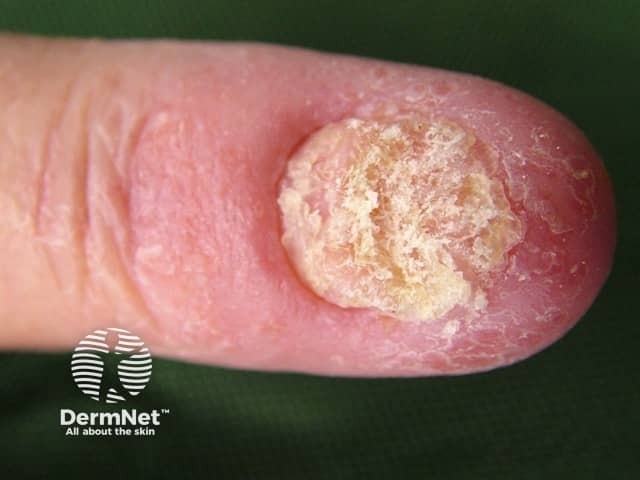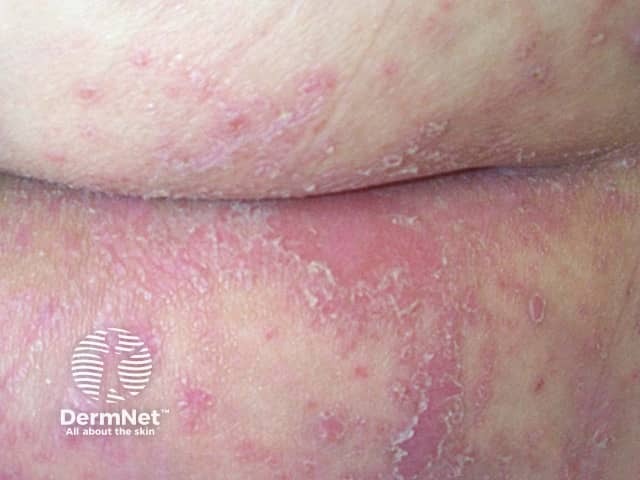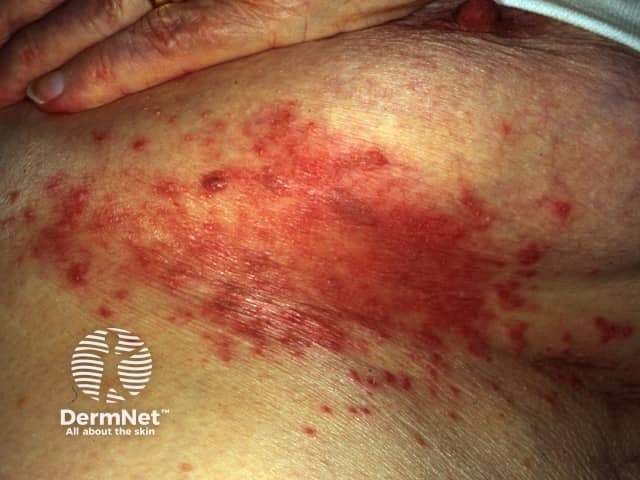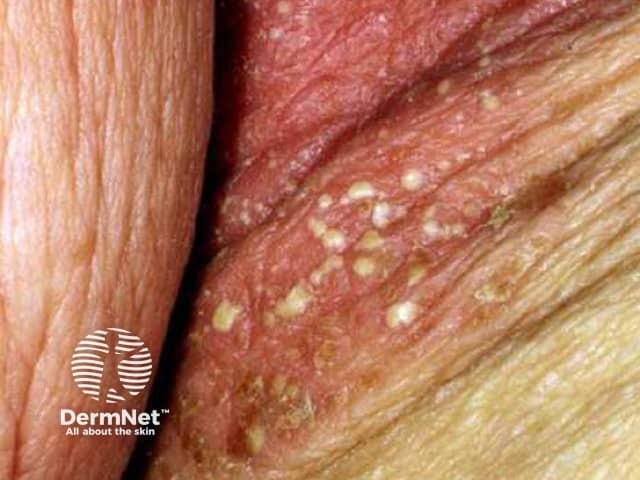Main menu
Common skin conditions

NEWS
Join DermNet PRO
Read more
Quick links
Candida — extra information
Introduction
Demographics
Classification
Predisposing factors
Invasive candidiasis
Diagnosis
What is candida?
Candida is the name for a group of yeasts (yeast is a type of fungus) that commonly infect the skin. The name ‘candida’ refers to the white colour of the organisms in culture. Candidal infection is known as ‘candidiasis’, ‘candidosis’ or ‘moniliasis’ (monilia is also a genus of ascomycete fungi).
Who gets candida?
Candida depends on a living host for survival. It is a normal inhabitant of the human digestive tract from early infancy, where it lives without causing any disease most of the time. However, if the host's defences are lowered, the organism can cause infection of the mucosa (the lining of the mouth, anus and genitals), the skin, and rarely, deep-seated infection.
How is candida classified?
The most common Candida (C) species to result in candidiasis is C. albicans. Other non-albicans candida species are:
- C. tropicalis
- C. parapsilosis
- C. glabrata
- C. guilliermondii
Candidal skin infections include:
- Oral candidiasis (oral thrush)
- Angular cheilitis
- Vulvovaginal candidiasis (genital infection in women) including cyclic vulvovaginitis
- Balanitis (penile infection)
- Intertrigo (skin fold infections)
- Napkin dermatitis (nappy or diaper rash)
- Chronic paronychia (nail fold infection)
- Onychomycosis (nail plate infection)
- Chronic mucocutaneous candidiasis.

Candidal nail infection

Candida infection

Candida infection

Intertrigo

Candida infection

Candida infection
See more images of candida infection.
- Oral candida infection images
- Candida intertrigo images
- Candida nail infection images
- Vulval candida infection images
Predisposing factors for candida infection
Cutaneous candidiasis is more likely in the following circumstances:
- Infancy or old age
- Warm climate
- Occlusion eg, plastic pants (babies), nylon pantyhose (women), dental plates
- Broad-spectrum antibiotic treatment
- High-oestrogen contraceptive pill or pregnancy
- Diabetes mellitus, Cushing syndrome and other endocrine conditions
- Iron deficiency
- General debility eg, from cancer or malnutrition
- Underlying skin disease eg, psoriasis, lichen planus
- Immunodeficiency eg, low levels of immunoglobulins, infection with human immunodeficiency virus (HIV)
- Chemotherapy or immunosuppressive medications including systemic steroids.
Invasive candidiasis
invasive candidiasis refers to spread of candida through the bloodstream (candidaemia) and infection of heart, brain, eyes, bones, and other tissues. This occurs in patients that are very unwell or that are immune suppressed. The common species of candida are usually found on culture, but sometimes one of about 15 other species are detected, such as:
- C. auris
- C. haemulonii.
See Non-albicans candida infections.
How is candida diagnosed?
Microscopy and culture of skin swabs and scrapings aid in the diagnosis of candidal infections. However, candida can live on a mucosal surface quite harmlessly. It may also secondarily infect an underlying skin disorder such as psoriasis. The results of laboratory tests must be correlated with the clinical presentation.
On DermNet
- Candidiasis – pathology
- Non-albicans candida infections
- Introduction to fungal infections
- Laboratory tests for fungal infection
- Treatment of fungal infections
- Occupational skin disorders in homemakers
- Australian box jellyfish stings
Other websites
- Fungal infections of the skin — DermNet e-lecture [Youtube]
- Yeast Infection Skin Rash — emedicine health
- Candidiasis (Yeast Infection) — emedicinehealth
- Candidiasis — CDC
